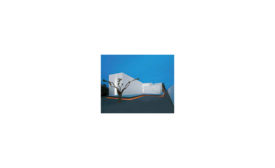Home » Spain
Articles Tagged with ''Spain''
Ofita, Madrid
King & Miranda delivers layers of light and space to Ofita's Madrid outpost.
Read More
House for a Photographer II
Carlos Ferrater draws on Spain's modern and vernacular traditions with a weekend house for a photographer.
Read More
Museum of the Roman Theater of Cartagena
Rafael Moneo weaves the past and the present in an intricate intervention for the Museum of the Roman Theater of Cartagena.
Read More
Plaza del Torico
b720 Arquitectos' redesign of the time-faded Plaza del Torico is light on its feet.
Read More
Copyright ©2024. All Rights Reserved BNP Media.
Design, CMS, Hosting & Web Development :: ePublishing
